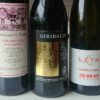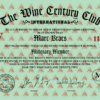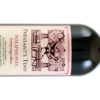
Although most of us will not commence our preparations for Christmas until the beginning of Advent, without doubt we are already being bombarded with the shops and other commercial operations via TV, newspapers, the mail, and the Internet, all trying to attract our attention to but this and that since the beginning of November, and some even earlier.
The preparation for this religious festival and the season of goodwill has changed dramatically since the end of WW2
Then, cakes, puddings, mincemeat, pickles and even decorations were more often ‘home made’ from October onwards with only the final touches left to the week leading up to the ‘big day’. Oh yes, how we of mature years remember! But that is history and unlikely to return.
It is time to look ahead to the festivities in this, the 8th (or is it the 9th.) year of the new millennium. What preparations can we, or should we, be making NOW?
Presents are one of the priorities, but they are more of a personal item. Selection should be left to the individual and the influence of the sales staff concerned and not from the interference of this newsletter. Cards are mainly an Anglo-American habit, but with rising postal costs, postal strikes etc. may well decline this year in favour of the Internet (unless you are a famer in the heart of rural Wales, Scotland or the American outback).
Some of the traditional preparations have been resurrected due to necessity, like the making of the pudding and making of mincement, and even cakes which may be difficult to obtain in some areas. (Recipes are readily available -. The United Kingdom BBC Good Food website is well worth a look)
Possibly the largest headache is in selection of the main course – what to have and with what to accompany it to make a memorable Christmas feast. To cover all the possibilities would need the writing of yet another book on food. Even in Europe, – country, regional and even area variations abound, so where to begin?
This year the proposal is a change from the traditional turkey to – ROAST GOOSE. Goose was the vogue in many parts of the United Kingdom long before turkey was introduced and became commercially available.
This year our suggested Bill of Fare for 2009 consists of:-
Aperitif –
Nuts (salted cashews, peanuts, walnuts or other types of nut), partnered by Brut Champagne NV. It makes the ideal accompaniment but can be expensive. Any Brut Traditional Method (once called Methode Champenoise) is acceptable. A good choice here is Crémant d’Alsace (Chardonnay- Pinot Blanc blend) from France or one of the many Traditional Method Italian sparklers.
Starter – a choice of two –
1.Fois Gras – ours will be from Alsace and not the traditional South West of France
Accompanied by:-
Gewurztraminer Tradition 2006 – Hugel
Although fairly expensive, an aromatic, rich, spicy, and lasting wine is necessary to accompany the locally produced fois gras from this region.
Website – www.hugel.com (available in English)
or.
2. Oysters –
Accompanied by:-
Gros Plant du Pays Nantais or Muscadet sur lie. My favourites are from Château du Cléray – Sauvion et Fils.
Website.- www.sauvion.fr (available in English)
‘Fat’ oysters – is one of the few dishes that make the highly acidic Gros Plant remotely drinkable. Many people refer to this wine as ‘the nearest thing there is to paint stripper’ It is surprising that when partnering ‘fat’ oysters it is perfect.
With oysters the wine partner must be both dry and fairly acidic. Whilst the Muscadet grape (Melon de Bourgogne) is excellent, Sauvignon Blanc from a cool climate is also very acceptable.
Main Course –
Roast Goose – There are many recipes on offer for making the most of a Christmas goose, but the art of preparing and cooking it is seldom included. Reading the magazine ‘The Poultry Keeper’ a year ago, Melanie Daniels’s article, gave a no fuss, traditional, old fashioned, but simple set of instructions on how to prepare and cook a goose. To her I am very grateful – it works!!! Here it is. The only item missing was the plucking of the bird; my advice – let the supplier do it for you.
Preparation –
Goose produces a huge amount of fat and therefore the roasting dish MUST have a draining tray to catch this fat and enable it to be drained off (and reserved) from time to time.
1. Remove the giblets and excess fat from the inside of the bird.
2. Pinch and prick the skin (Do not stab the meat). This helps with the running off of the fat.
3. Rub the skin with sea salt, pepper, and herbs de Provence.
Cooking –
As geese come in many sizes, the following instructions are quoted in minutes per kilo (2.25 pounds)
1. Place the prepared bird in a large dish (or double casserole). Place it into the pre-heated oven at 220 degrees C (440 degrees F) for 10 to 15 minutes.
2. Reduce to 190 degrees C (370 degrees F) and cook for a further 25 – 30 minutes per kilo. (This will make for a ‘medium’ cooked bird. If you like the meat ‘well done’ a few more minutes will be necessary).
3. Remove the bird about every 30 minutes and drain off the fat. (The fat should be retained for cooking the potatoes). Baste the bird at the same time.
4. At any sign of scorching, cover that part with foil.
5. At the end of the cooking period, allow to rest for 30 minutes turning the bird upside down to allow for the breast meat to remain moist.
Stuffing and Accompaniments –
Keep them simple, roast goose is very rich and is best shown to perfection when not overwhelmed with too many side dishes.
Parsley and thyme stuffing – home made adding in some of the giblets, finely chopped, and a little goose fat to bind. Cook separately from the bird or it may go soggy.
Redcurrant jelly, apple sauce, or whole cooked chestnuts could also be considered.
Finally, (and in my opinion a MUST)
Potatoes – roasted in the oven in goose fat until golden brown.
This is a main dish to satisfy a king.

Wines to accompany
This is a rich meal; therefore the wines need to have flavour, depth and acidity.
From France – I would suggest –
Brouilly or Cote de Brouilly from the Beaujolais.
Château Thivin en Beaujolais 2006 or 7. Their Brouilly and Cote de Brouilly have all the flavour of the gamay grape plus good acidity. Both are produced on the granitic soils of the area with the Cote having a hint of volcanic heat on the palate. Mount Brouilly is the site of an ancient and now extinct volcano.
The Geoffrey family have been making wines here for 5 generations.
Contact – Claude Geoffrey, 69460 Odenas
Website – www.chateauthivin.com (English available)
or
St. Estephe or Haut Medoc from Bordeaux
Côte de Nuits from Burgundy.
Try to avoid the softer wines from Southern France.
In the United States and Canada, the Pinot Noirs from Oregon and Washington State are highly recommended
From Italy – The Piedmont family of wines from the Nebbiolo grape (Barbaresco, Barolo etc.) or a quality DOC Barbera also pair well with the goose.
Cheese and Dessert
Cheese – If you are having a cheese course, select your cheeses to match the wines chosen to accompany the goose.
Blue cheeses – Stilton and Roquefort are rich and tasty but need to be accompanied with a sweet botrytised wine (or Vintage Port).
The Loire – Coteaux de Layon (again available under the Sauvion label) is not only botrytised but also, with the cooler climate, has better acidity
Dessert – Although many Brits will insist on their Christmas pudding at this stage and continuing with the port, the more weight conscious may prefer fresh fruit to clean the palate.
With the latter and again as a real refresher, the recommendations are:-
Brut or Demi-Sec Champagne
Asti (Moscato grape) from Italy (ideal as it in lower in alcohol – circa 7.5% abv)
Eiswein from Canada or Germany – (pricey, but well worth it – normally in half-bottle)
Digestif
Coffee with Armagnac or a VSOP cognac.
Author’s Note on Availability of Wines
The wines specifically mentioned ABOVE are available in the UK, the USA and Canada, but naturally not everywhere. A quick look at the web for any of them, or at the site of the company itself, may give a satisfactory answer.
As stated in previous articles I prefer to search out my wines from small independent growers, not just from the super- and hypermarkets; the latter cannot be expected to stock lines that may have a production of a few hundred bottles. For example in the Beaujolais alone there are more than 400 producers. Some produce under their own label but the majority sell wine or grapes or both to the ‘larger’ companies throughout the whole of Burgundy. They, in turn, blend the producers wine, or make the grapes to suit their own house style.
This has led to one well known wag of a grower referring to Beaujolais wines blended and bottled in the Cote d’Or around the town of Beaune as BEAUNE-JOLAIS.
From our family to yours wherever you are
Happy Christmas – Joyeux Noel

Filed under: Hello Everybody by Grahame Martin
1 Comment »








 Lisa Donneson, having gained her Wine and Spirit Education Trust Diploma in 2006, set up Bouké wine to promote the wines of Long Island NY. Yes you have it correct – Long Island (NY) wines, – from internationally known vitis vinifera grape varieties. In French terms Lisa became a négotiant – éleveur (a person who buys grapes, – it could be wines, but not in her case -, for the purpose of making and selling wines under her own name) With many of the French major red and white vine varieties represented (as they are grown commercially in the area around Long Island), what better name for her company than a play on the French word ‘Bouquet’ for the name of her company.
Lisa Donneson, having gained her Wine and Spirit Education Trust Diploma in 2006, set up Bouké wine to promote the wines of Long Island NY. Yes you have it correct – Long Island (NY) wines, – from internationally known vitis vinifera grape varieties. In French terms Lisa became a négotiant – éleveur (a person who buys grapes, – it could be wines, but not in her case -, for the purpose of making and selling wines under her own name) With many of the French major red and white vine varieties represented (as they are grown commercially in the area around Long Island), what better name for her company than a play on the French word ‘Bouquet’ for the name of her company.









 How ironic. One of the most exclusive clubs in the world, and a true wine snob could never hope to join.
How ironic. One of the most exclusive clubs in the world, and a true wine snob could never hope to join.


